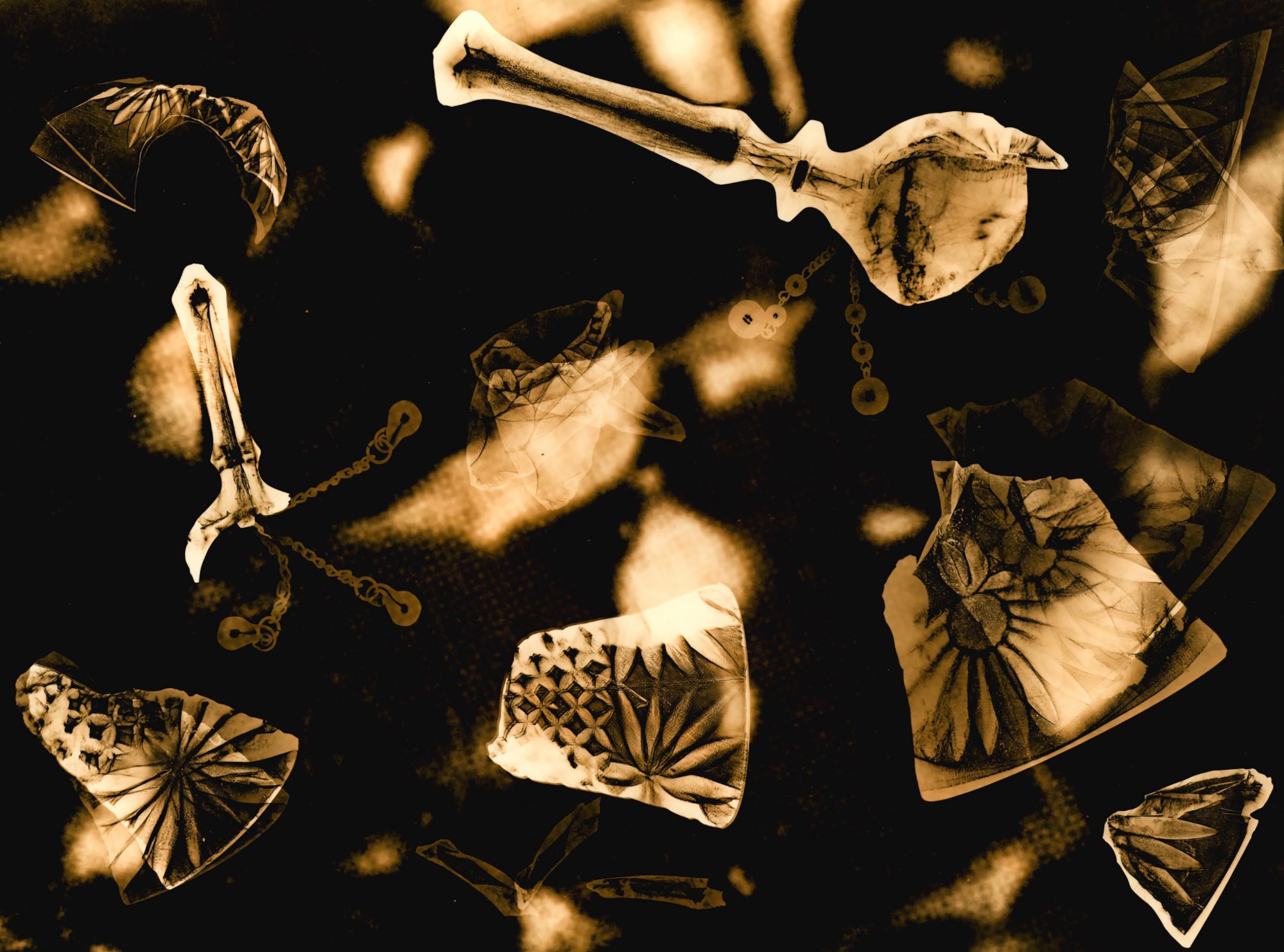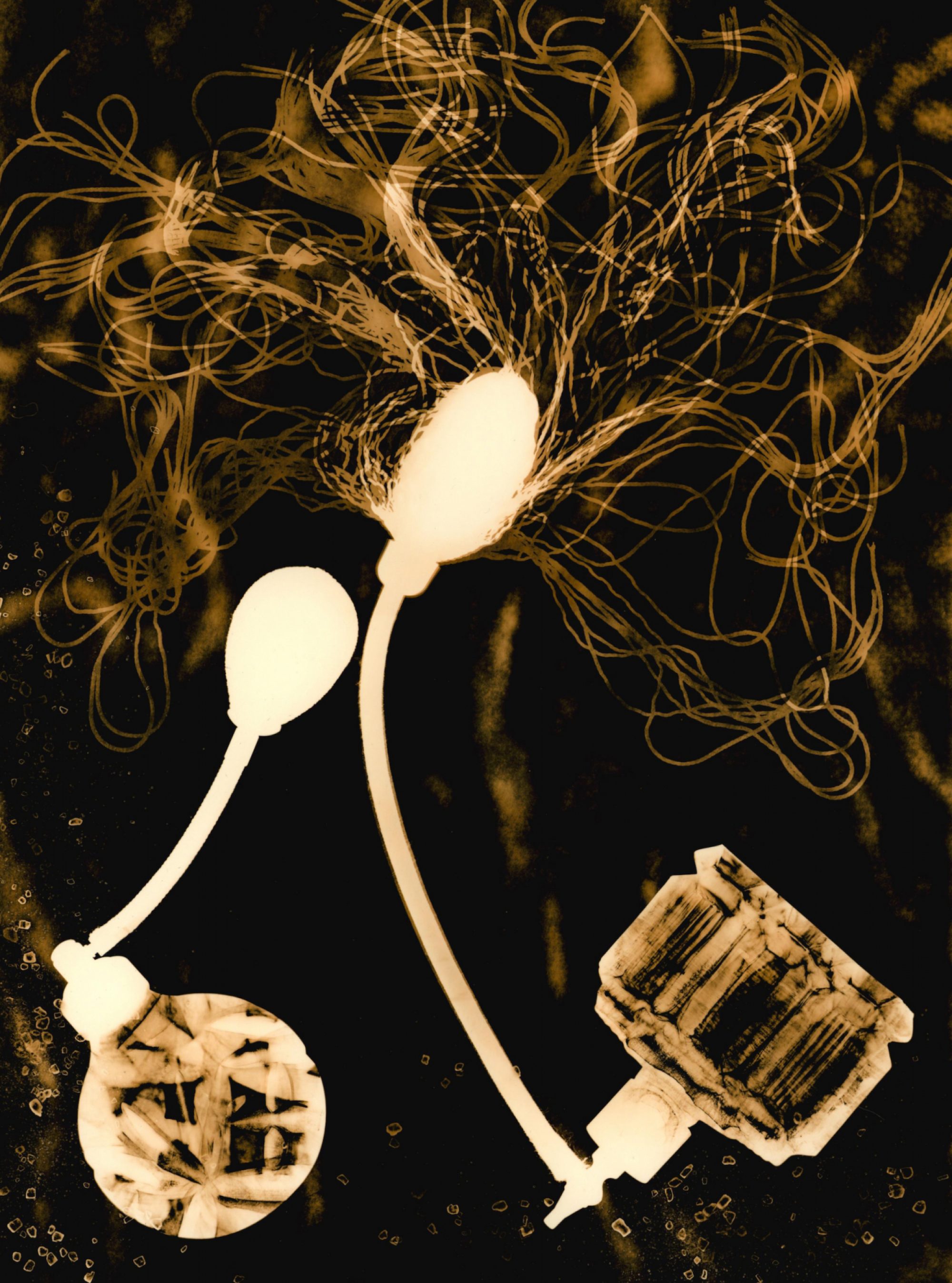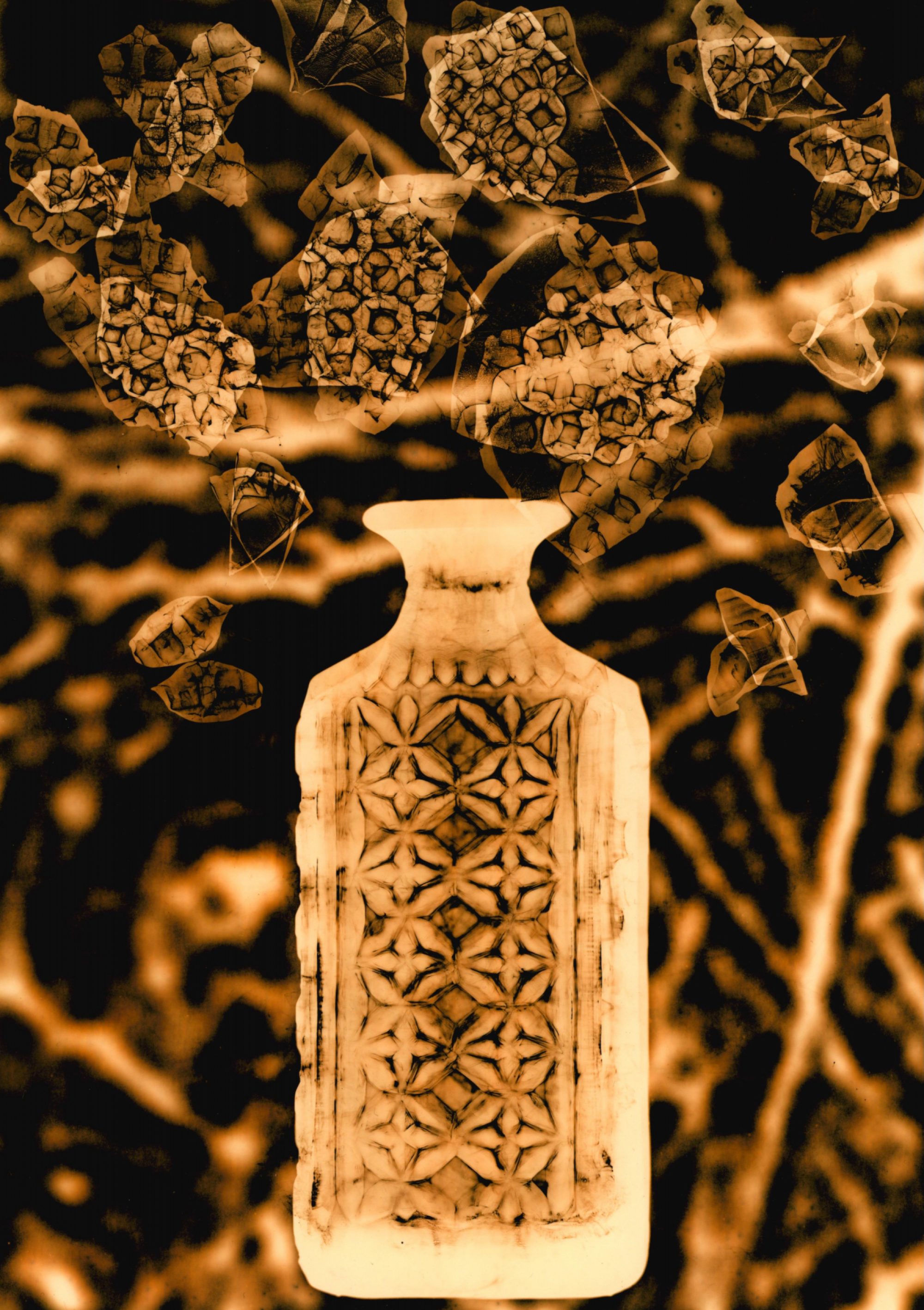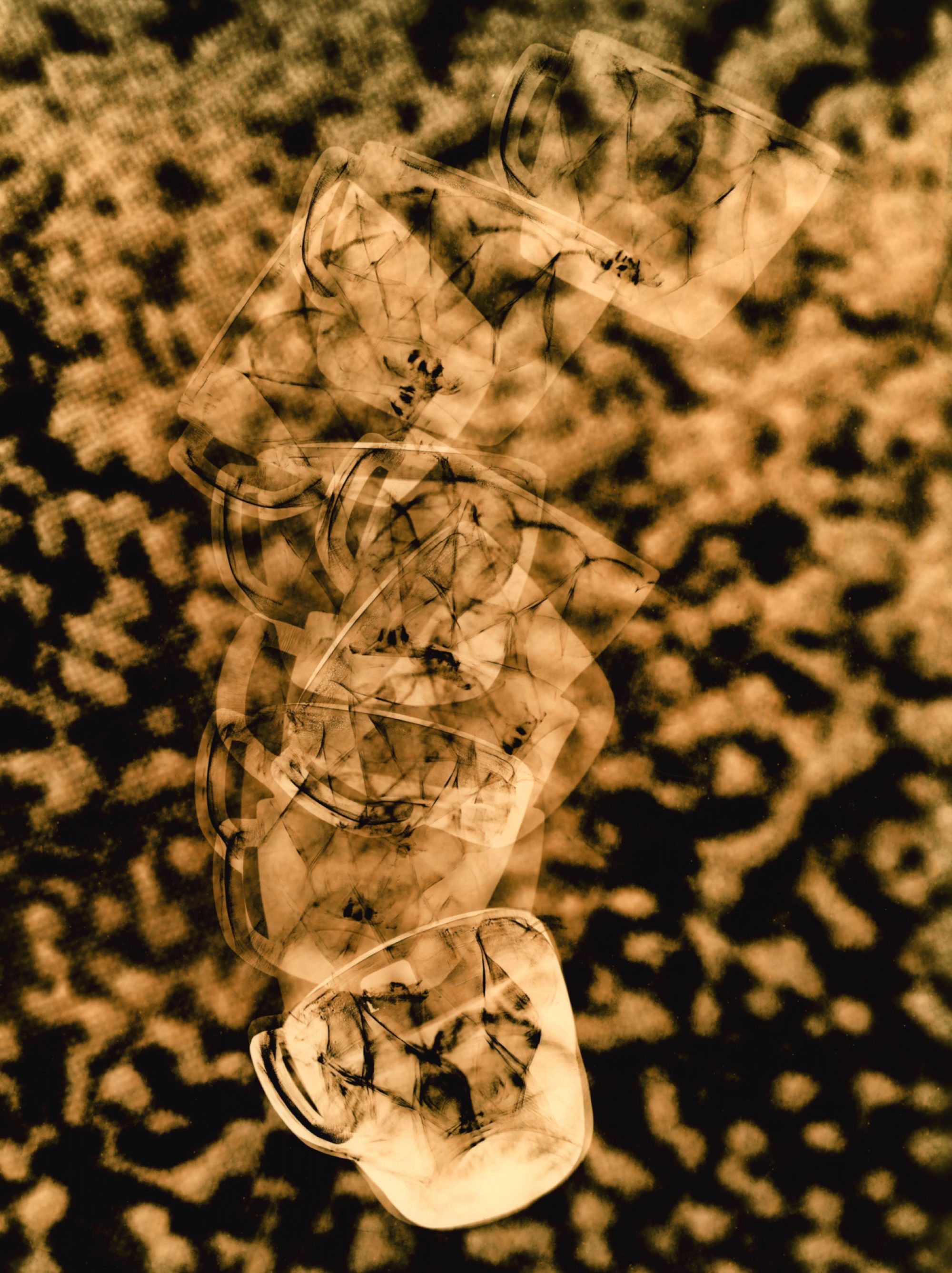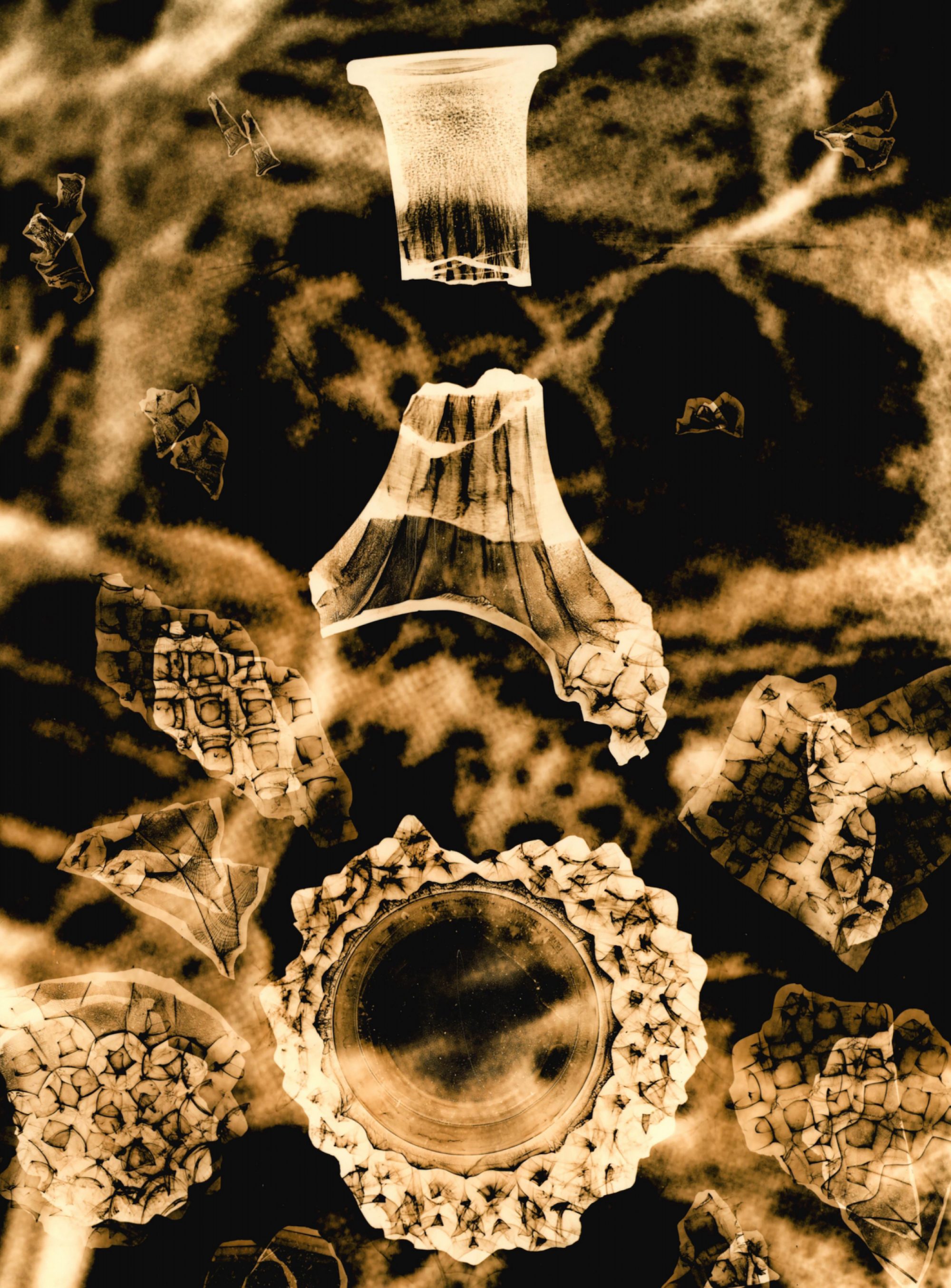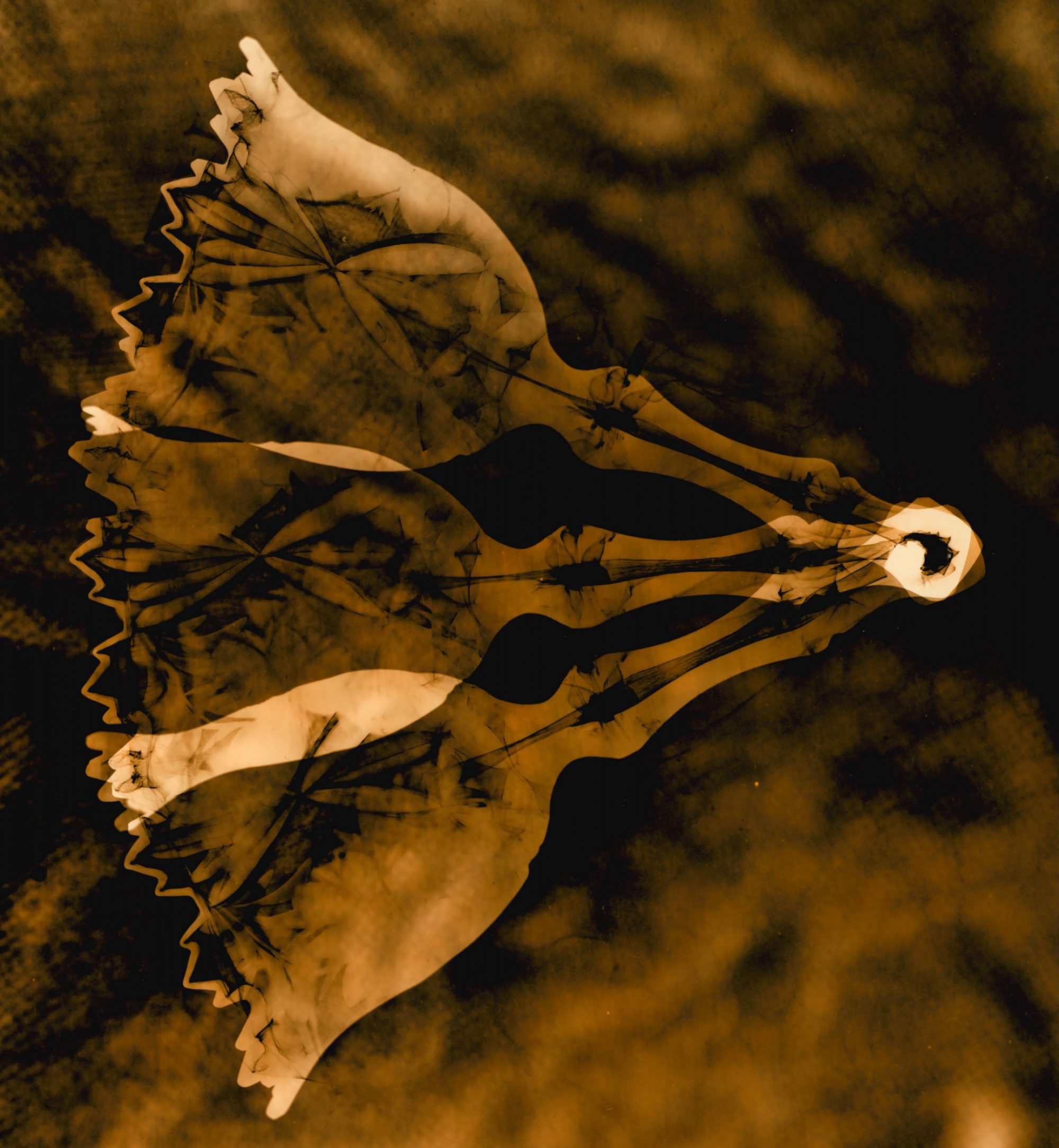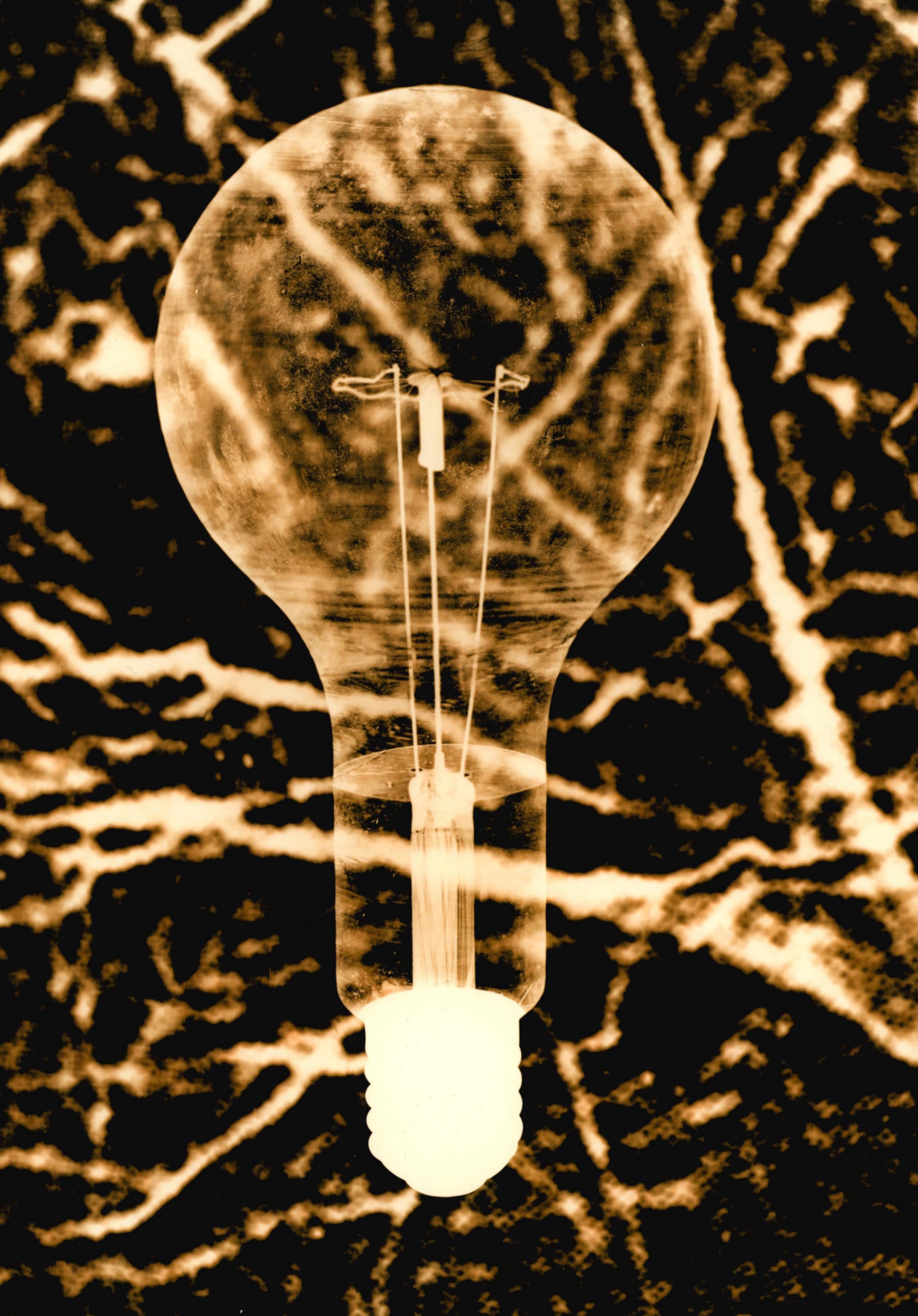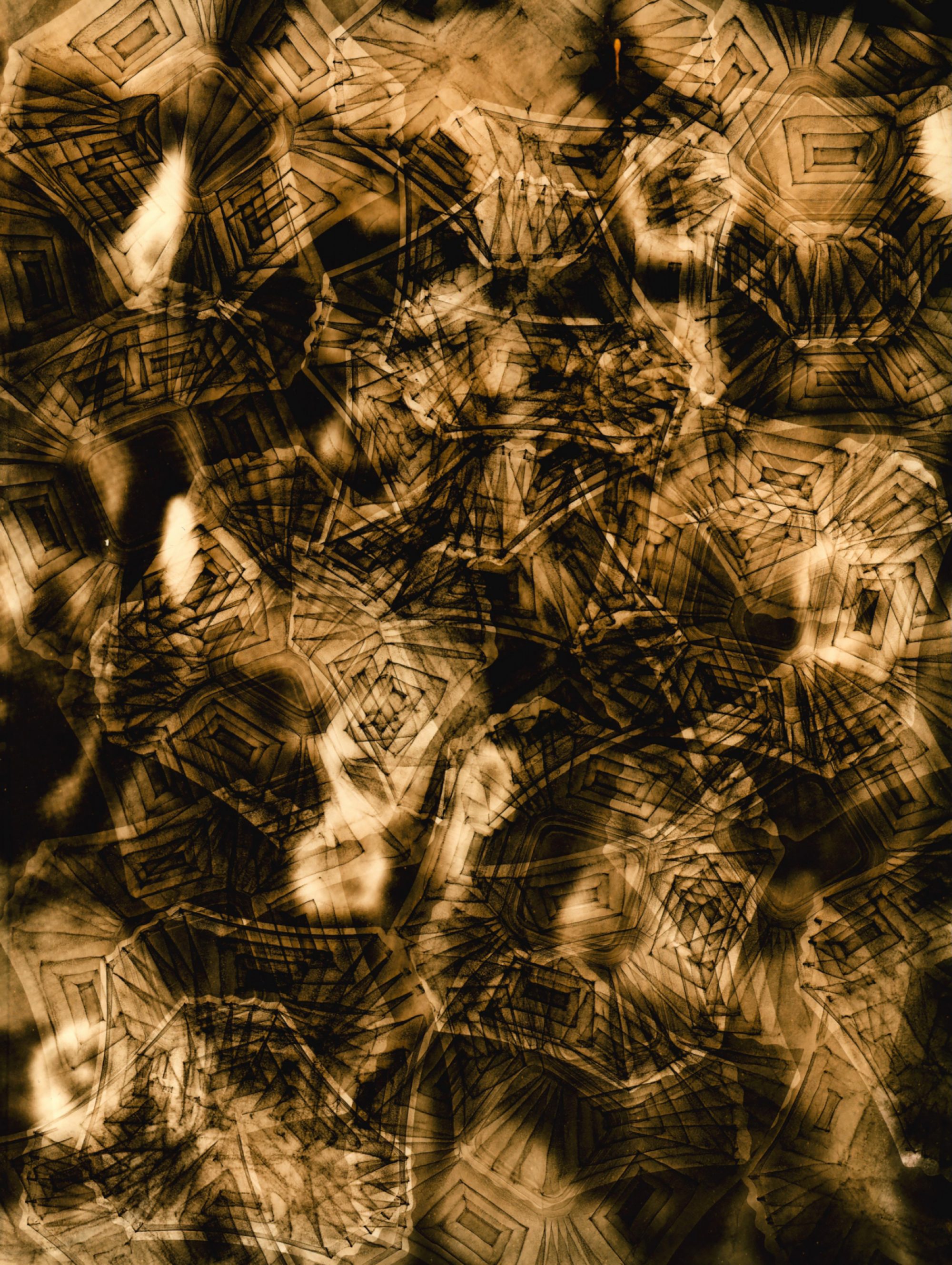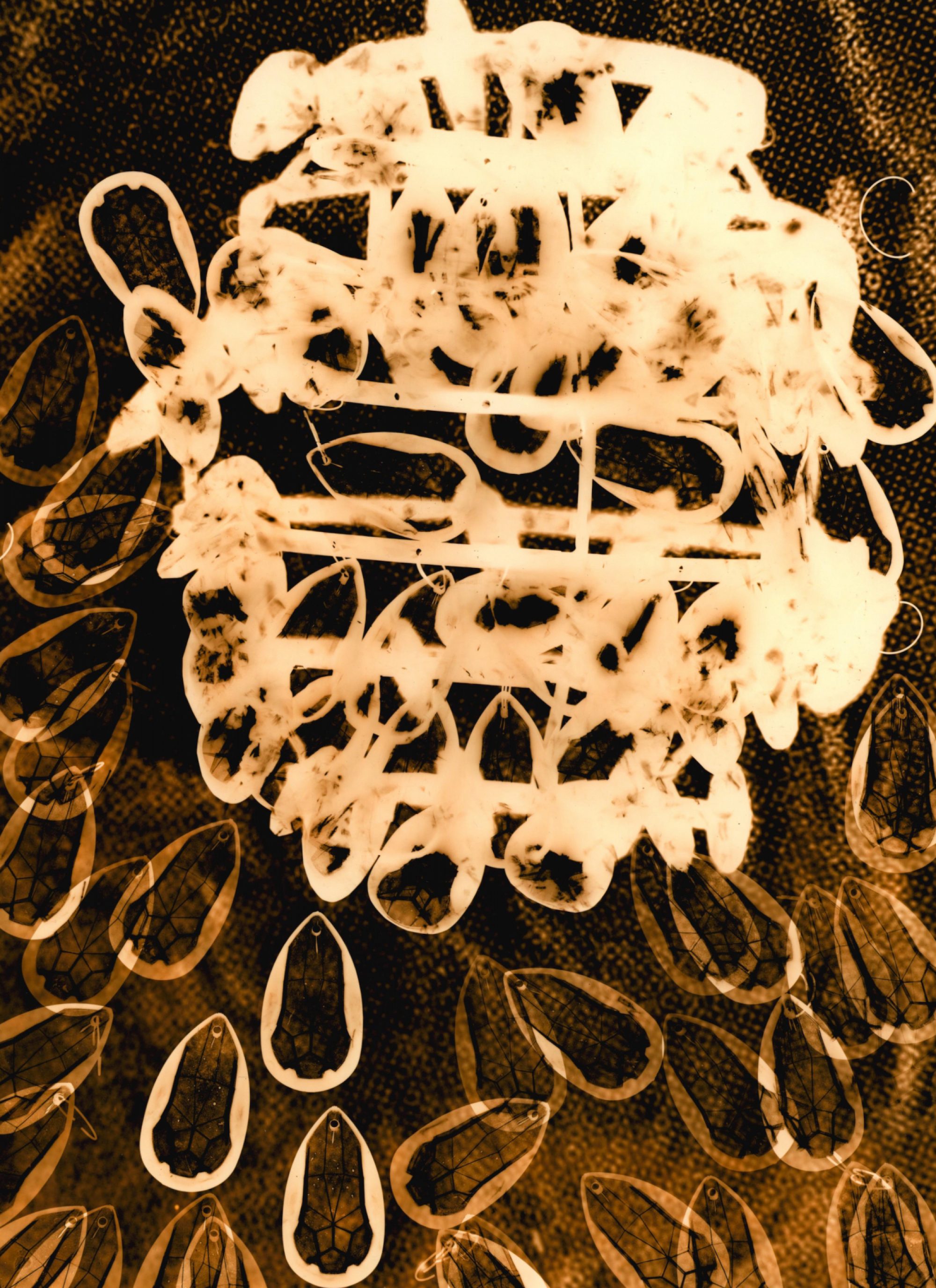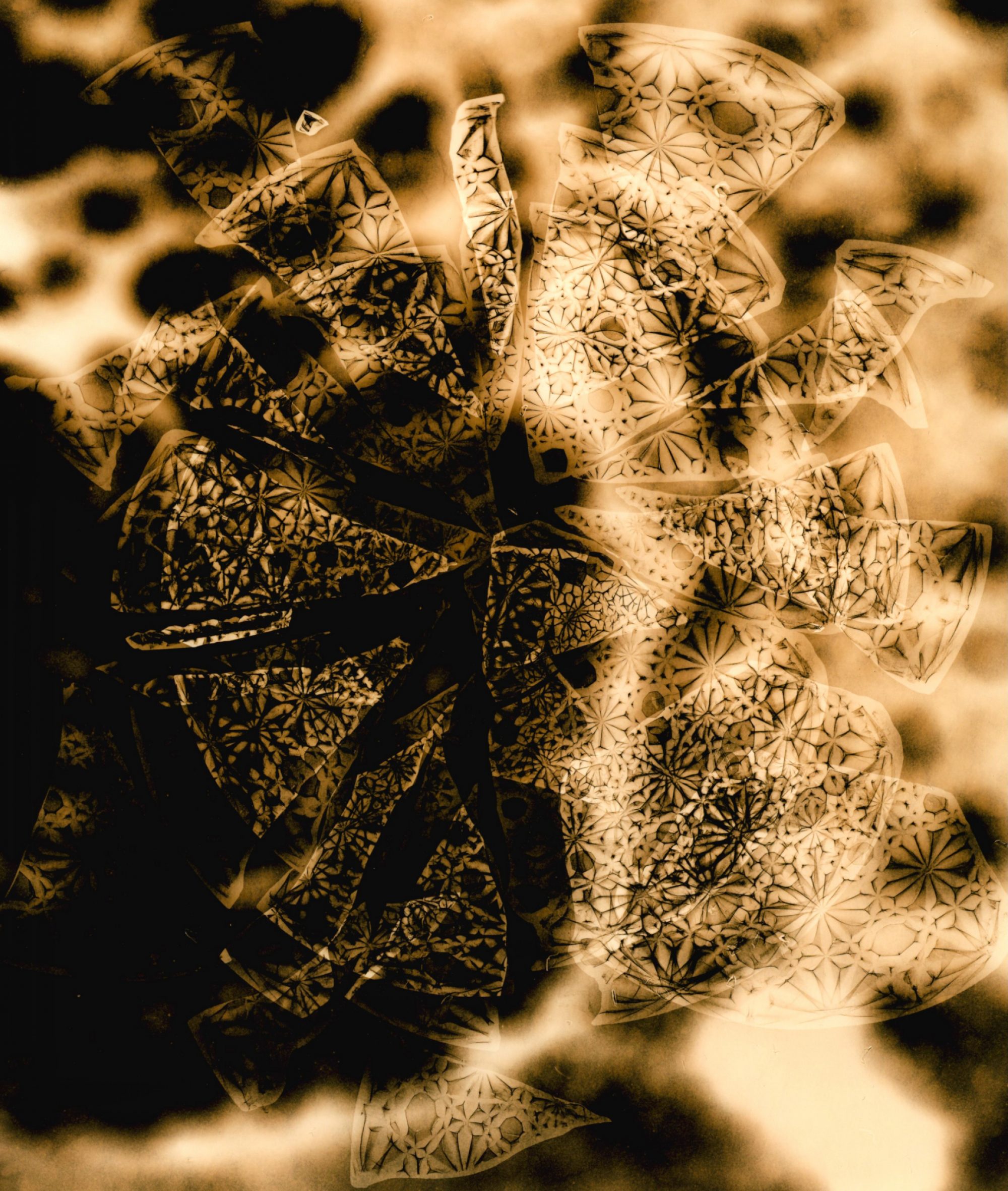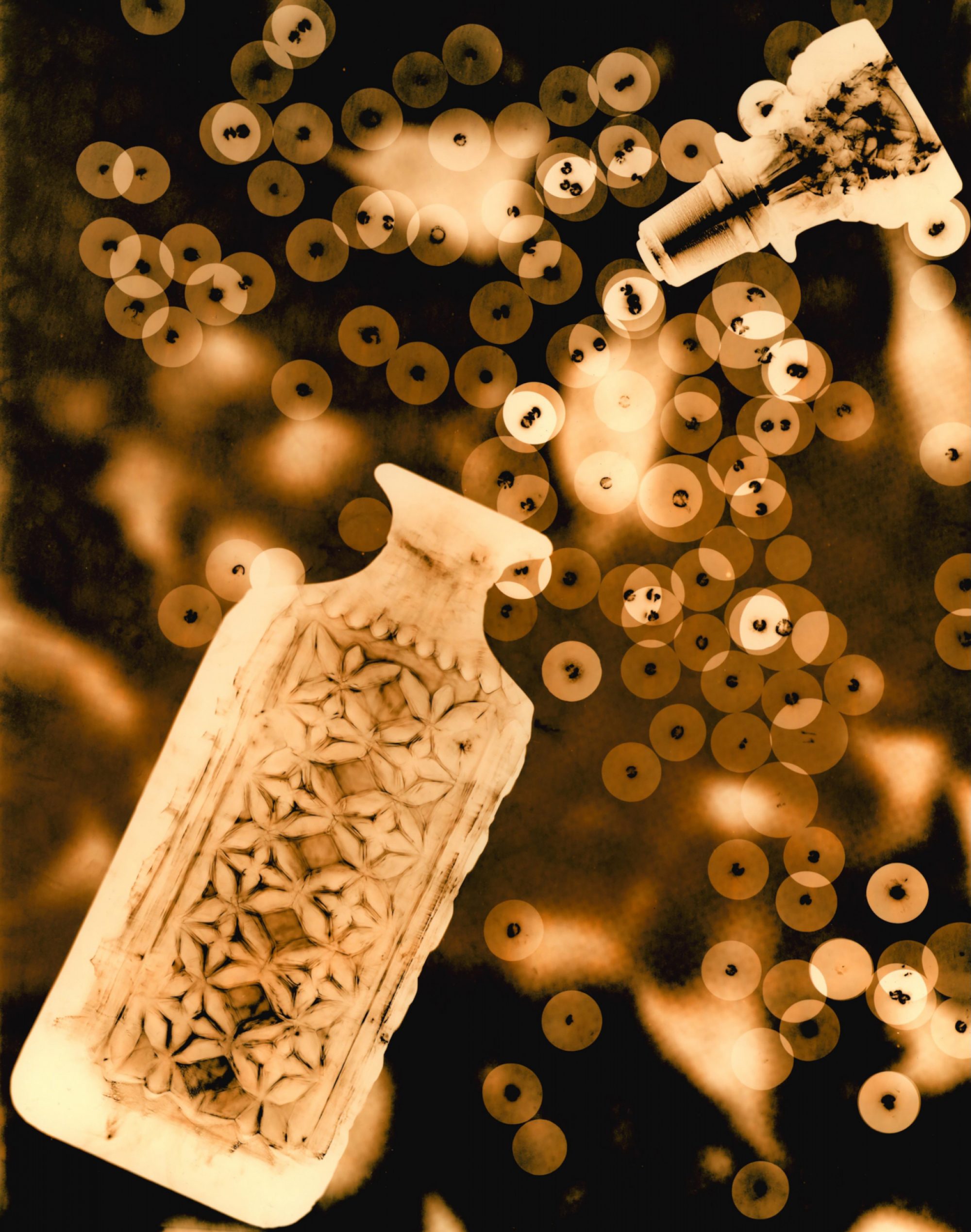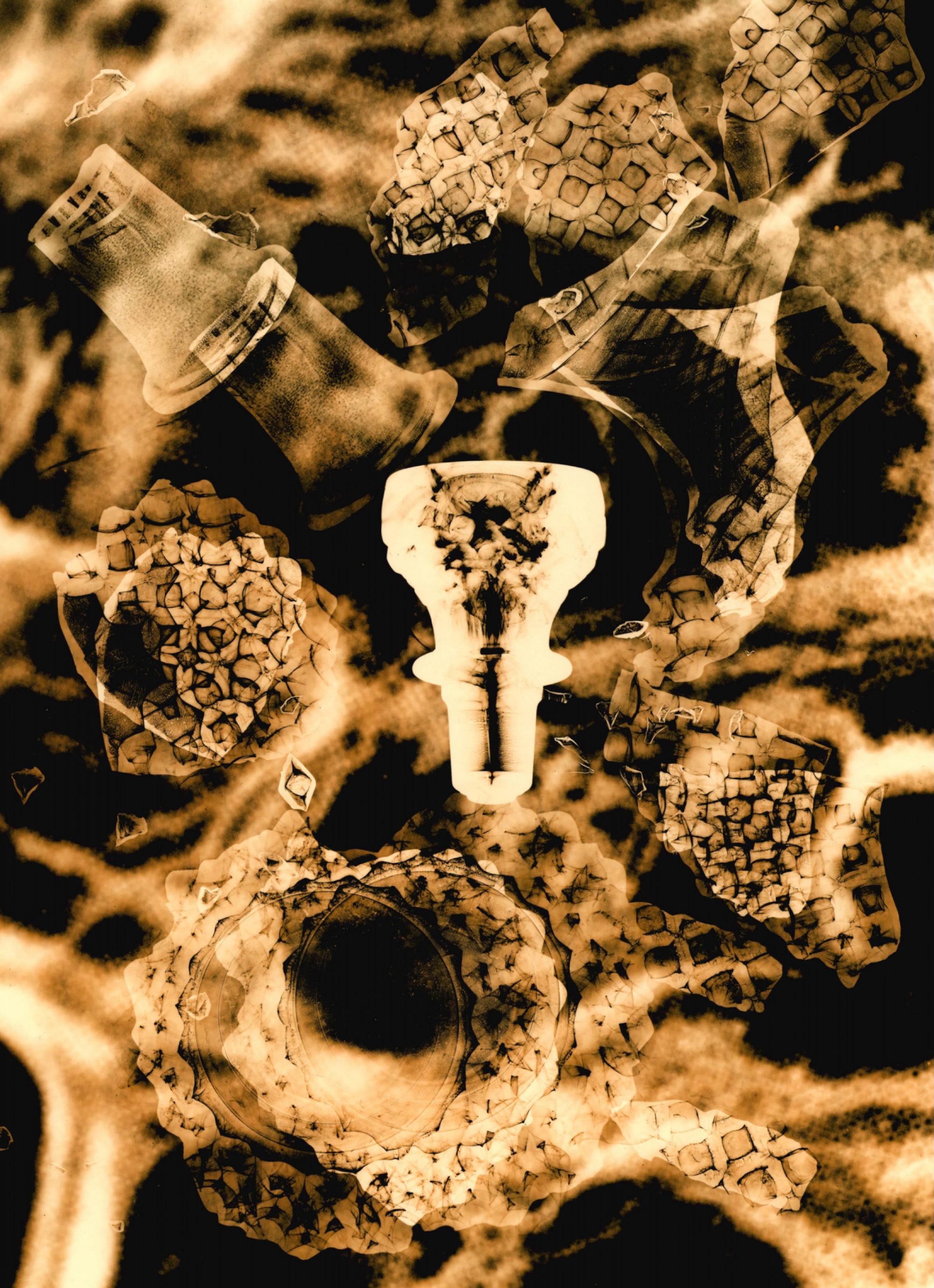'Foreign Bodies'
Jo Stapleton
The series ‘Foreign Bodies’ began life as an experiment to explore the quality and potential of photograms using the Lith printing process. Inspired by Cornelia Parker’s Polymer Gravure etchings, I visited local charity shops in search of domestic glass objects to transform into printed artefacts. The Lith process produced a glow or visual echo around the edges and details within the glass. This prompted me to think of the objects as floating in fluid, biological and cellular in nature. Using a set of histology transparencies from an old medical textbook, I projected macro images of human cells and tissues on to the photographic paper, arranging and creating a relationship between the objects and projections. My aim was to explore the photogram objects as ‘foreign bodies’ within the human body and the beauty, otherness and alien nature of our micro biology. By the stop-start rotation of glass pieces during the exposure process, I sought to create a sense of movement and to suggest the breakdown or absorption of objects by the body.
Artist biography
I am a Hertfordshire (UK) based alternative process film and darkroom photographer. My photographic practice focuses upon constructed realities using models, found objects and photo collage to construct and capture photographic moments or stories. Print making and alternative processes are integral components of my creative practice and image construction. As an active member of London Independent Photography Network and Shutterhub, I have participated in UK and international exhibitions. I am an RPS 100 Photographic Heroines nominee and 2020 analogue photography grant recipient of the Richard and Siobhan Coward Photography Foundation.
